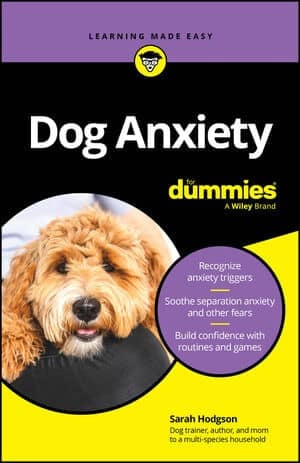Find out whether your dog or puppy has anxiety, and learn what you can do to help
Dog anxiety is common among all breeds, but different dogs can show different symptoms. Dog Anxiety For Dummies is for the millions of dog parents (and dog-parents-to-be) who want to help improve their pets' quality of life and relieve their suffering. With this helpful resource, you can recognize common signs of anxiety in dogs, discover what triggers their anxiety, learn to use training and play to ease anxiety, and find professional help when you need it. You'll also get tips for dealing with specific situations like separation anxiety, fear aggression, noise-sensitive pups, and addressing trauma in rescue dogs. Calm dogs of all ages with the expert tips inside!
- Recognize your dog's anxiety symptoms and triggers
- Understand treatment options for dogs displaying anxious behaviors
- Implement daily routines and training solutions to help alleviate anxiety
- Help your dog feel comfortable about strangers, cope with containment anxiety, and live a happy life
This is the perfect Dummies guide for puppy and dog owners whose pets are suffering from anxiety, and for anyone considering adopting a dog in the future.
Find out whether your dog or puppy has anxiety, and learn what you can do to help
Dog anxiety is common among all breeds, but different dogs can show different symptoms. Dog Anxiety For Dummies is for the millions of dog parents (and dog-parents-to-be) who want to help improve their pets' quality of life and relieve their suffering. With this helpful resource, you can recognize common signs of anxiety in dogs, discover what triggers their anxiety, learn to use training and play to ease anxiety, and find professional help when you need it. You'll also get tips for dealing with specific situations like separation
- Recognize your dog's anxiety symptoms and triggers
- Understand treatment options for dogs displaying anxious behaviors
- Implement daily routines and training solutions to help alleviate anxiety
- Help your dog feel comfortable about strangers, cope with containment anxiety, and live a happy life
This is the perfect Dummies guide for puppy and dog owners whose pets are suffering from anxiety, and for anyone considering adopting a dog in the future.

